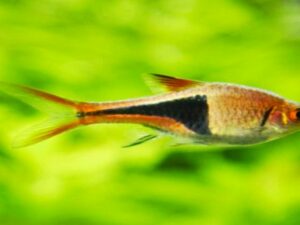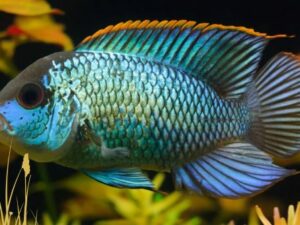The Silver dollar fish is a popular aquarium fish that is easy to care for and fun to watch. These colorful fish are found in most pet stores.
They have very interesting biology and make a great addition to any aquarium. Silver dollar fish care is not complex, but there are a few things you need to know to keep your fish healthy and happy.
This guide will learn everything you need to know about keeping silver dollar fish healthy and happy in your home aquarium. We will cover everything from selecting the right tank size and type to feeding and maintaining water quality.
So, whether you are a beginner fish keeper or an experienced aquarist, this guide will teach you everything you need to know about silver dollar fish care. Let’s get started!
Table of Contents
- Species Summary
- Silver Dollar Fish Care
- Silver Dollar Fish Food & Diet
- Tank Size
- Water Parameters
- Filtration
- Heater
- Lighting
- Filter Media For Filter
- Decoration
- Water Conditioners
- Other Tank Accessories
- Cleaning The Tank
- Common Possible Diseases
- Preventing Diseases
- Treatment And Medications Of Diseases
- Diet Foods To Avoid
- Silver Dollar Fish Tank Mates
- Fish to Avoid
- Advantages Of Having Silver Dollar Fish In Your Tank
- Disadvantages Of Having Silver Dollar Fish In Your Tank
- Conclusion
Species Summary
| Scientific name: | Metynnis argenteus |
| Common names: | Silver dollar fish, Tinfoil barbs |
| Family: | Characidae |
| Origin: | Central and South America |
| Color: | Silver with black markings |
| Size: | 6 inches (15 cm) |
| Lifespan: | 10 years or more |
| Temperament: | Peaceful |
| Minimum tank size: | 75 gallons |
| pH Range: | 5.0-7.0 |
| Temperature Range: | 75°-82°Fahrenheit (24°-28°Celsius) |
| Water Hardness: | 4-15 dGH |
| Water Type: | Freshwater |
| Care Level: | Easy |
| Temperament: | Peaceful |
| Swimming Level: | Middle to top |
| Compatibility: | Other peaceful fish |
| Diet: | Omnivores but prefer live food |
They eat mostly plants and small fish in the wild. One of their nicknames is “the vegetarian piranha.” This is worth it because you will want to provide them with a mostly plant matter diet. They are opportunistic feeders and will also eat small insects, crustaceans, and worms.
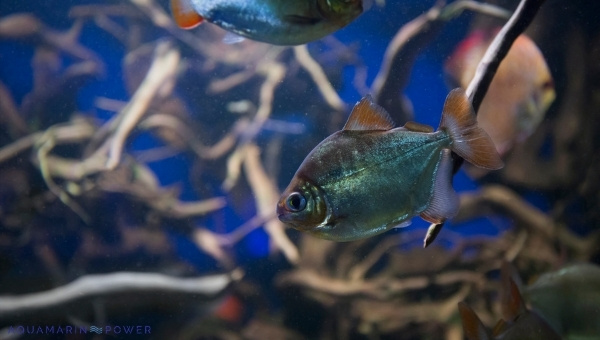
Silver dollar fish are also used to being in schools, so it is best to keep them in groups of at least 3-5 fish. They generally get along with other peaceful fish and can even be kept with smaller fish if they are not aggressive eaters.
These are top-dwelling fish that like to swim in the middle to top levels of the aquarium. They are not fussy about water conditions and can adapt to a wide range of pH and hardness levels. However, they do prefer a slightly acidic, soft water environment.
Silver Dollar Fish Size & Growth Rate
The average size is 6 inches (15 cm), but they can grow up to 8 inches (20 cm) in length. They are slow-growing fish, so it may take a few years to reach their full size.
There is the occasional report of a giant Silver dollar fish that reaches up to 2 feet (60 cm) in length, but this is extremely rare. Most silver dollars that are this size have been fed an unnatural diet of pellets or live fish.
It is best to purchase at least 4 inches (10 cm) in length, as smaller fish may be less hardy.
Silver Dollar Fish Lifespan
The typical lifespan is 10 years or more. However, some have been known to live for over 20 years. Because of their natural habitat and diet, they are hardy fish not prone to many diseases.
However, this still means they are susceptible to the same illnesses as any other fish. The best way to ensure a long and healthy life is to provide them with a clean, healthy tank environment and a balanced diet.
Silver Dollar Fish Appearance
The silver dollar fish looks very similar to the common goldfish, with a long, slender body and large scales. They are silver in color with black markings on their fins and tail.
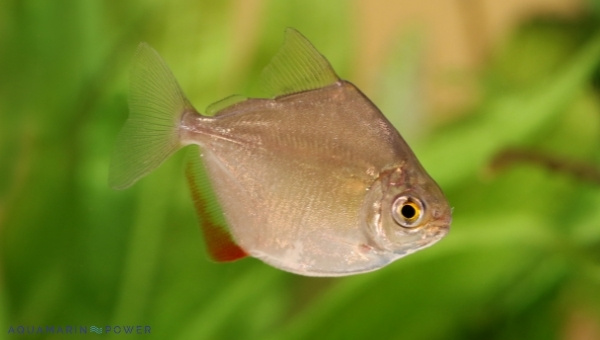
Their name comes from their large, round scales that resemble silver dollars. These scales are very tough and have a bumpy texture. Because of their tough scales, they are sometimes called “tinfoil barbs.”
The majority of their body is covered in these large scales, except their belly, which is smooth. They have a small mouth located at the end of their snout. They have two pairs of barbels (fleshy, whisker-like organs) on their upper lip that they use to find food in the substrate.
Their dorsal fins look like a single, long fin that runs the length of their back. The front ridge of the dorsal fin is black, and the rest of the fin is silver. They have a black anal fin and a silver caudal (tail) fin.
Their caudal fins are forked, and their anal and dorsal fins are slightly rounded. Both males and females have long, flowing pelvic fins to help them move through the water.
Males and females are very similar in appearance, but males tend to be slightly larger than females. They also have a more pronounced hump on their back, just behind their head.
Silver Dollar Fish Behavior & Temperament
Silver dollar fish are a very social species, and they should be kept in groups of at least six. They are a schooling fish and will become stressed if they are kept alone.
They are very active fish, and they need plenty of space to swim. They are a very peaceful species and should not be kept with aggressive fish. You’ll rarely see them nipping at fins or bullying others. They are a very hardy species and can tolerate a wide range of water conditions.
They are a very beautiful species, and they are a popular choice for many aquariums.
Types Of Silver Dollar Fish
There are a few types of Silver dollar fish available for purchase. The most common are the South American variety, which is the focus of this care guide.
Other types of Silver dollar fish include:
- Red Hook Silver Dollar Fish: These fish are very similar. The main difference is their coloration. Red hook silver dollars are reddish-brown with black spots on their fins and tail. They are named after the hooks located on their anal and dorsal fins.
- Barred Silver Dollar Fish: These fish have a distinctive black and white striped pattern on their body. They are a bit smaller than the other types of Silver dollar fish, averaging 5-6 inches (12-15 cm) in length.
- Thai Silver Dollar Fish: These fish are a pale yellow with black markings on their fins and tail. They are the smallest Silver-dollar fish, averaging 3-4 inches (7-10 cm) in length.
- Spotted Silver Dollar Fish: These fish are dark silver with black spots on their fins and tail. They are the second-largest Silver dollar fish, averaging 6-7 inches (15-18 cm) in length.
- Tiger Silver Dollar Fish: These fish are silver in color with black markings that resemble tiger stripes on their fins and tail. They are the largest Silver dollar fish, averaging 8-9 inches (20-23 cm) in length.
- South American Silver Dollar Fish: The South American Silver dollar fish is the most common type of Silver dollar fish. They are a Silver color with black markings on their fins and tail. They are the largest of the silver dollar fish.
Silver Dollar Fish Breeding
Silver dollar fish are a very popular choice for many aquariums, and they are bred in a wide variety of colors. If you are interested in breeding silver dollar fish, there are a few things you need to know. First, you need to make sure that you have a tank that is at least 75 gallons in size.
You also need to make sure that the tank is well-maintained and that the water is clean and clear.
The breeding process begins when the male and female fish are introduced to each other. The male will start to chase the female around the tank, eventually attaching himself to her. Once the male has attached himself to the female, she will lay her eggs on the surface of a plant or piece of driftwood. The male will then fertilize the eggs, and they will hatch in about 24-48 hours.
Once the fry has hatched, they will be free-swimming, starting to look for food. You can feed them baby brine shrimp or finely crushed flake food.
As the fry grows, you can start to give them more significant foods such as bloodworms and brine shrimp. It is important to remember that silver dollar fish grow quite quickly, so you will need to have a tank that is large enough to accommodate them.
If you take good care of your silver dollar fish and provide them with the proper environment, they will thrive, and you will be able to enjoy watching them grow.
Silver Dollar Fish Care
Silver dollar fish care is very similar to the care of other types of fish. You will need to provide them with a clean tank, healthy water, and a balanced diet.
These are hardy and durable fish suitable for both beginner and experienced fish keepers. This allows you to learn about fish care and husbandry while keeping a beautiful and exciting pet.
Silver Dollar Fish Food & Diet
Silver dollar fish are omnivorous, so they will eat various foods.
It is important to provide your silver dollar fish with a balanced diet to stay healthy.
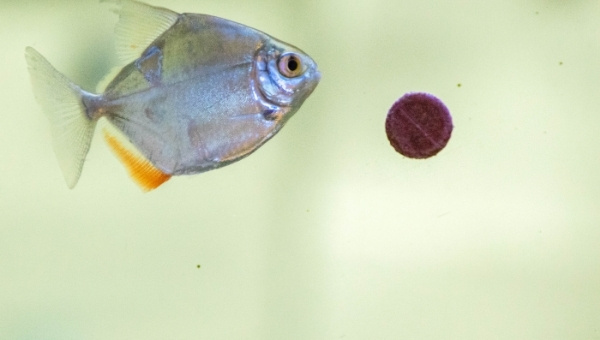
Some good food options for Silver dollar fish include:
- Frozen brine shrimp: Frozen brine shrimp is a good source of protein and can be used to supplement your fish’s diet.
- Frozen bloodworms: Frozen bloodworms are an excellent source of protein and can be used to supplement your fish’s diet.
- Cichlid pellets: Cichlid pellets are a good source of protein and can be used to supplement your fish’s diet.
- Mosquito larvae: Mosquito larvae are a good source of protein and can be used to supplement your fish’s diet.
- Algae wafers: Algae wafers are a good source of vegetable matter and can be used to supplement your fish’s diet.
Some vegetables, such as zucchini, broccoli, and spinach, are a good source of vegetable matter and can be used to supplement your fish’s diet.
Fruit, such as bananas and melons, is a good source of sugar and can be used to supplement your fish’s diet. It is important to note that you should not feed your fish too much of any one type of food. A balanced diet is key to keeping your fish healthy.
These are just a few of the many food options. It is essential to do some research to find the food options that are best suited for your fish.
Tank Size
The minimum tank size for Silver dollar fish is 75 gallons. They grow to be around 8-9 inches (20-23 cm) in length. If you plan on keeping more than one fish, you will need to increase the size of your tank accordingly.
As a general rule of thumb, you should add 10 gallons of water for every fish you add to your tank, so if you have a 75-gallon tank and want to add 3 silver dollar fish.
Water Parameters
They are very tolerant of a wide range of water conditions. However, they prefer water that is on the softer side. The ideal water parameters are:
- pH level: The pH level of your tank should be between 5.0 and 7.0
- Temperature: The ideal temperature for silver dollar fish is 72°-78° Fahrenheit (22°-25° Celsius).
- Water hardness: 4-18 dGH
- Ammonia levels: 0 ppm
- Nitrite levels: 0 ppm
- Nitrate levels: 10-30 ppm
- Healthy Water: One of the most important aspects of fish care is maintaining healthy water. This means keeping the ammonia, nitrite, and nitrate levels at zero. You can do this by doing regular water changes and using a quality aquarium filter.
Filtration
A good aquarium filter is an essential piece of equipment for any fish tank. It will help to keep the water clean and free of harmful toxins. There are various types of filters available on the market.
Recommended filters for Silver dollar fish tank:
- Canister filters: Canister filters are an excellent option for tanks. They are very efficient at filtering out large amounts of water and can be hidden away, making them a good choice if you want to keep your tank looking clean and tidy.
- Aquarium power filters: Aquarium power filters are a good option for tanks. They are efficient at filtering out large amounts of water and can be easily attached to the side of your tank.
- Aqueon Quiet Flow Internal Filters: Aqueon Quiet Flow Internal Filters are an excellent option for tanks. They are reticent and efficient at filtering out large amounts of water.
- Hang-on-back filters: Hang-on-back filters are a good option for tanks. They are easy to set up and take care of, and they can be easily hidden away if you want to keep your tank looking clean and tidy.
- Submersible Filters: Submersible filters are a good option for tanks. They are easy to set up and take care of, and they can be easily hidden away if you want to keep your tank looking clean and tidy.
Heater
If you live in a colder climate than 72°Fahrenheit (22°Celsius), you will need to install a heater in your tank. Ensures that your fish do not get too cold and die. There are a variety of different heaters available on the market.
Recommended heaters include:
- Aquarium heater pads: Aquarium heater pads are a good option for tanks. They are easy to install and help to keep your tank at a constant temperature.
- Aqueon Pro Series Heaters: Aqueon Pro Series Heaters are an excellent option for tanks. They are easy to install and have a built-in thermostat, making them very easy to use.
- Eheim Jager Heaters: Eheim Jager Heaters are an excellent option for tanks. They are very durable and come with a built-in thermostat, making them easy to use.
Lighting
If you live in a climate that is darker than 12 hours of daylight, you will need to install a light in your tank. Ensure that your fish have enough light to swim around in and stay healthy. There are various lights available on the market.
Recommended lights for tanks:
- Aquarium fluorescent light fixtures: Aquarium fluorescent light fixtures are a good option for tanks. They are affordable and come in a variety of different sizes.
- LED aquarium light fixtures: LED aquarium light fixtures are a good option for tanks. They are very energy efficient and come in a variety of different colors.
Filter Media For Filter
For your filter to work correctly, you will need to install some filter media. This will help to remove impurities from the water and keep your fish healthy. There are various types of filter media available on the market.
Recommended filter media for Silver dollar fish tanks:
- Aquarium activated carbon: Aquarium activated carbon is a good option for tanks. It is very effective at removing impurities from the water and will help to keep your fish healthy.
- Aquarium sponge filters: Aquarium sponge filters are a good option for silver dollar fish tanks. They are affordable and effective at removing impurities from the water.
Decoration
Decorating your tank is a great way to make it look more appealing to you and your fish. There are various types of decorations available on the market.
Recommended decorations for Silver dollar fish tanks:
- Aquarium rocks: Aquarium rocks are a great way to decorate your tank. They are affordable and come in a variety of different sizes.
- Aquarium plants: Aquarium plants are a great way to decorate your tank. They are affordable and come in a variety of different colors.
- Aquarium gravel: Aquarium gravel is a great way to decorate your tank. It is affordable and comes in a variety of different colors.
Water Conditioners
Water conditioners are a very important part of keeping your fish healthy. They help to remove impurities from the water and make it safe for your fish to live in.
There are various types of water conditioners available on the market, so you will need to do some research to find the one that best suits your needs.
Recommended water conditioners for Silver dollar fish tanks:
- Aqueon Water Conditioner: Aqueon Water Conditioner is a good option for tanks. It is very effective at removing impurities from the water and will help to keep your fish healthy.
- API Tap Water Conditioner: API Tap Water Conditioner is a good option for tanks. It is affordable and easy to use.
Other Tank Accessories
There are various types of tank accessories available on the market, so you will need to do some research to find the ones that best suit your needs.
Recommended tank accessories for Silver dollar fish tanks:
- Aquarium thermometer: Aquarium thermometers are a good option for tanks. They are affordable and easy to use.
- Aquarium air pump: Aquarium air pumps are a good option for tanks. They are affordable and come in a variety of different sizes.
Cleaning The Tank
Cleaning the tank is a very important part of fish care. It is important to remove all of the impurities from the water and make sure that your fish have a clean and safe environment to live in. There are various ways to clean your tank, so you will need to do some research to find the one that best suits your needs.
Recommended methods for cleaning Silver dollar fish tank:
- Vacuuming the gravel: Vacuuming the gravel is an excellent way to remove impurities from the water. It is easy to do and does not require any special equipment.
- Cleaning the filter: Cleaning the filter is an excellent way to remove impurities from the water. It is essential to clean the filter regularly to ensure that your fish have a healthy environment.
- Changing the water: Changing the water is an excellent way to remove impurities from the water. It is essential to change the water regularly.
Common Possible Diseases
There are various diseases that can affect Silver dollar fish, so it is important to be aware of the symptoms and know how to treat them.
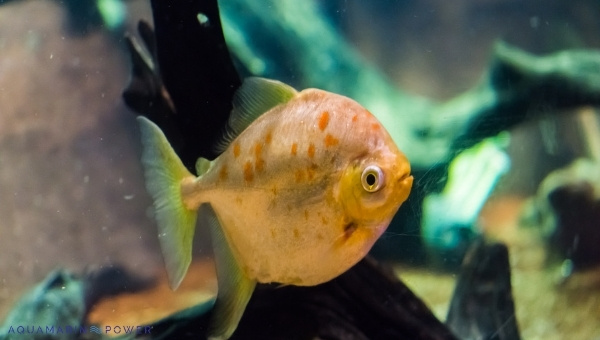
Here are some of the most common diseases that can affect Silver dollar fish:
- Dropsy: Dropsy is a bacterial infection that can cause swelling in the body. It is often fatal if not treated promptly.
- Fin rot: Fin rot is a bacterial infection that can cause the fins to rot. It is often fatal if not treated promptly.
- Columnaris: Columnaris is a bacterial infection that can affect the skin and fins. It is often fatal if not treated promptly.
If you think that your fish may be suffering from any of these diseases, it is important to seek professional help from a veterinarian.
Preventing Diseases
There are various ways to prevent disease, so it is important to do some research to find the ones that best suit your needs.
Here are some tips for preventing disease in Silver dollar fish:
- Quarantine new fish: Quarantine new fish before adding them to your tank. This will help to prevent the spread of disease.
- Change the water regularly: Change the water in your tank regularly to prevent the build-up of impurities.
- Clean the tank regularly: Clean your tank regularly to remove any impurities that could cause disease.
These are just a few of the many things you can do to prevent disease in silver dollar fish. If you want to learn more, it is essential to consult with a veterinarian.
Treatment And Medications Of Diseases
If your fish are suffering from a disease, there are various treatments and medications that you can use to help them recover.
Here are some of the most common treatments and medications for diseases in Silver dollar fish:
- Antibiotics: Antibiotics are often used to treat bacterial infections.
- Anti-parasitic medications: Anti-parasitic medications are often used to treat parasitic infections.
- Fungicides: Fungicides are often used to treat fungal infections.
Diet Foods To Avoid
There are many different foods that you should avoid feeding your silver dollar fish.
Some of these foods include:
- Bread: Bread is not a good source of nutrition for fish and can be harmful to them.
- Cookies: Cookies are not a good source of nutrition for fish and can be harmful to them.
- Junk food: Junk food is not a good source of nutrition for fish and can be harmful to them.
So, these are just a few of the many foods that you should avoid. It is essential to consult with a veterinarian to determine what foods best suit your fish’s diet.
Silver Dollar Fish Tank Mates
One of the most important things you need to consider when keeping silver dollar fish is tank mates. They are a very social species and should be kept in groups of at least six.
When choosing tank mates for your silver dollar fish, it is important to keep a few things in mind. First, you need to make sure that the fish are compatible in terms of temperament.
You also need to make sure that the tank is big enough to accommodate all of the fish. Silver dollar fish are very active fish, and they need plenty of space to swim around in. A tank that is at least 30 gallons is recommended.
Finally, you need to make sure that the fish are compatible in terms of size. Silver dollar fish can grow up to four inches in length, and some of their tank mates may be too small for them.
Some good tank mates for silver dollar fish include:
- Bristlenose: Bristlenose is a good choice for a tank mate because they are a peaceful species, and they grow to only about four inches in length.
- Oscar Fish: Oscar fish are a good choice for a tank mate because they are a peaceful species, and they grow to only about ten inches in length.
- Platys: Platys are a good choice for a tank mate because they are a peaceful species, and they grow to only about two inches in length.
- Clown Plecos: Clown plecos are a good choice for a tank mate because they are a peaceful species, and they grow to only about four inches in length.
- Red Empress: Red Empress is a good choice for a tank mate because they are a peaceful species, and they grow to only about ten inches in length.
- Corydoras: Corydoras are a good choice for a tank mate because they are a peaceful species, and they grow to only about four inches in length.
- Kuhli Loaches: Kuhli loaches are an excellent choice for a tank mate because they are a peaceful species, and they grow to only about four inches in length.
- Cory Catfish: Cory catfish are a good choice for a tank mate because they are a peaceful species, and they grow to only about four inches in length.
- Neon tetras: Neon tetras are an excellent choice for a tank mate because they are a peaceful species, and they grow to only about two inches in length.
So, these are just a few of the many tank mates that you can choose for your silver dollar fish. It is essential to do some research to find the fish that are best suited for your tank.
Fish to Avoid
- Goldfish: Goldfish are a poor choice for a tank mate because they are a very aggressive species, and they can grow to be quite large.
- Angelfish: Angelfish is a poor choice for a tank mate because they are a very aggressive species and can grow to be quite large.
- Barbs: Barb is a poor choice for a tank mate because they are a very aggressive species, and they can grow to be quite large.
Advantages Of Having Silver Dollar Fish In Your Tank
The first advantage of having silver dollar fish in your tank is that they are a very peaceful species. They will not bother other fish in the tank, and they will get along well with most other types of fish.
Another advantage of having silver dollar fish in your tank is that they are effortless to care for. They are not picky eaters, and they do not require a lot of maintenance.
Finally, silver dollar fish is a wonderful addition to any tank, and they will bring a lot of color to your aquarium.
So, these are just a few of the many advantages of having silver dollar fish in your tank. They make an excellent choice for beginner aquarists, and they are sure to bring a lot of enjoyment to your aquarium.
Disadvantages Of Having Silver Dollar Fish In Your Tank
The first disadvantage of having silver dollar fish in your tank is that they can grow to be quite large. If you are not prepared to have a fish that size in your tank, this may not be the right choice.
Another disadvantage of having silver dollar fish in your tank is that they require a lot of space, and they may not be suitable for small tanks. If you are limited on space, then you may want to consider another type of fish.
So, these are just a few of the many disadvantages of having silver dollar fish in your tank. While they do have some advantages, there are also a few things to consider before making the decision to add them to your aquarium.
Conclusion
In conclusion, silver dollar fish make an excellent choice for any aquarium, and they are sure to bring a lot of color and enjoyment to your tank. They are a very peaceful species, effortless to care for.
Caring for them can be a fun and rewarding experience, but there are a few things you need to know before you add them to your tank. Make sure you have the space and the resources to take care of them, and you will be sure to have a happy and healthy fish for many years to come. Thanks for reading!


